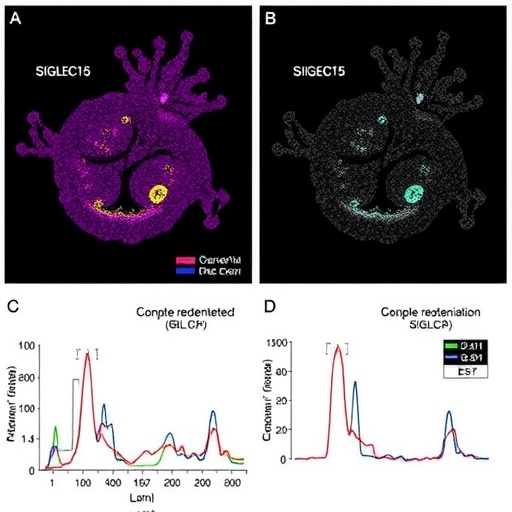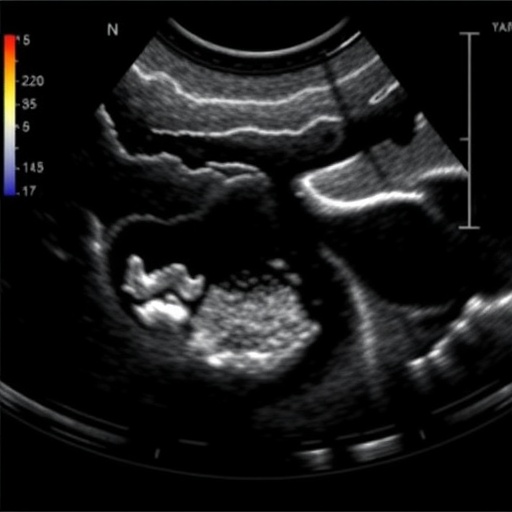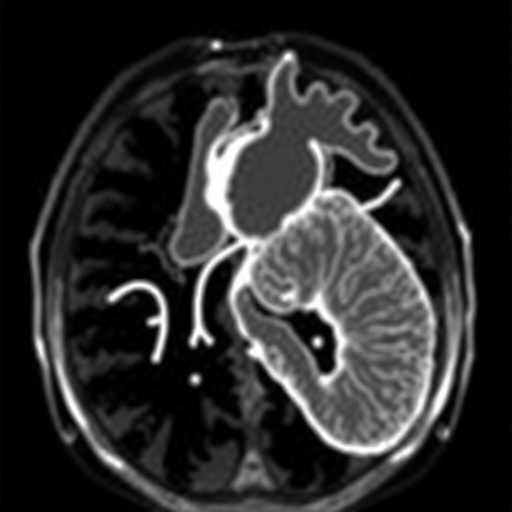Breast cancer remains the preeminent malignancy affecting women globally, persistently challenging clinicians and researchers alike in their pursuit of more effective and less deleterious treatment modalities. While advances in surgery, chemotherapy, radiotherapy, targeted therapy, and immunotherapy have collectively improved outcomes, the quest for precision medicine strategies that minimize side effects and optimize therapeutic efficacy continues unabated. In this context, SIGLEC15, a sialic acid-binding immunoglobulin-like lectin, emerges as a promising molecular player with potent immunomodulatory properties and significant implications in the breast tumor microenvironment (TME).
SIGLEC15 is a transmembrane protein that has recently garnered attention for its immunosuppressive capabilities across diverse solid tumor types, including breast cancer. Despite its relatively nascent characterization, accumulating evidence suggests that SIGLEC15 functions as a pivotal immune checkpoint molecule, distinct from the classical PD-1/PD-L1 axis, and may orchestrate tumor immune evasion by modulating myeloid cells and T-cell activity. Given these insights, a comprehensive elucidation of SIGLEC15’s role in breast cancer biology could unveil novel avenues for therapeutic intervention and biomarker-driven treatment stratification.
A team of investigators from Chongqing Medical University undertook an integrative study employing multi-omics datasets—namely TCGA (The Cancer Genome Atlas), GTEx (Genotype-Tissue Expression), and GEO (Gene Expression Omnibus)—to dissect the clinical and molecular significance of SIGLEC15 in breast cancer. Their analyses revealed a paradoxical yet intriguing association: elevated SIGLEC15 expression correlated with improved overall survival and favorable five-year prognosis. This counterintuitive finding challenges the conventional notion of immune checkpoints merely facilitating tumor progression, suggesting a complex and context-dependent functional spectrum for SIGLEC15 within the tumor milieu.
Delving deeper through single-cell RNA sequencing (scRNA-seq) of breast cancer tissue samples, the researchers pinpointed SIGLEC15 expression predominantly in malignant epithelial cells. These SIGLEC15-positive populations were characterized by a notable reduction in infiltrating CD4⁺ and CD8⁺ T-lymphocytes along with diminished presence of M0 and M1 macrophage subsets. Conversely, there was an enrichment of dendritic cells and B cells, indicative of a shift toward humoral immune mechanisms and an immunosuppressive microenvironment less conducive to cytotoxic T-cell mediated tumor eradication. This immune landscape remodeling underscores SIGLEC15’s role in shaping cellular cross-talk within the TME to favor immune escape.
Beyond its immunomodulatory effects, SIGLEC15 emerged as a critical regulator of epithelial–mesenchymal transition (EMT), a key driver of tumor invasiveness and metastasis. Functional assays demonstrated that SIGLEC15 exerts suppressive control over EMT by downregulating ZEB1, a master transcriptional regulator of this process. Overexpression models in the aggressive breast cancer cell lines BT549 and MDA-MB-231 revealed marked decreases in ZEB1 protein levels alongside classical mesenchymal markers such as N-cadherin and vimentin. Correspondingly, these alterations translated into diminished migratory and invasive capabilities as evidenced by wound healing assays and transwell migration metrics.
Conversely, silencing SIGLEC15 in MDA-MB-231 cells elicited robust enhancement in EMT phenotypes, underpinning its tumor suppressor-like function with respect to metastatic potential. These reciprocal functional validations underscore SIGLEC15’s dualistic role, whereby it modulates both immune suppression and tumor cell plasticity — a nuanced interplay that challenges prevailing assumptions and invites reconsideration of its utility as a therapeutic target.
Importantly, their investigation extended to therapeutic vulnerability profiling, revealing that high SIGLEC15-expressing breast tumors exhibited lower sensitivity to conventional platinum-based chemotherapies and PARP inhibitors, agents typically efficacious in DNA damage response deficient malignancies. Intriguingly, these same tumors demonstrated pronounced susceptibility to Nutlin-3a, a small-molecule antagonist of MDM2 that stabilizes and activates p53 tumor suppressor pathways. This finding suggests that SIGLEC15 expression status might serve as a predictive biomarker for tailoring treatment regimens, prioritizing MDM2 inhibition in tumors less amenable to DNA-damaging agents.
In vivo xenograft studies corroborated these insights, with Nutlin-3a markedly suppressing tumor growth in SIGLEC15-overexpressing models while low-SIGLEC15 tumors were more responsive to carboplatin chemotherapy. This mechanistic synergy between SIGLEC15 expression and drug response highlights the potential for integrating molecular diagnostics into therapeutic decision-making, advancing the paradigm of personalized medicine in breast cancer care.
Collectively, this comprehensive work delineates SIGLEC15 as a multifaceted mediator within the breast cancer TME that simultaneously modulates immune architecture and tumor cell invasive behavior. Its dual capacity to suppress EMT and orchestrate an immunosuppressive microenvironment positions it uniquely at the crossroads of tumor progression and immune evasion, rendering it a compelling candidate for translational research and clinical exploitation.
The implications are profound: beyond serving as a prognostic biomarker, SIGLEC15 may guide therapeutic selection—steering patients toward MDM2 inhibitors when overexpressed, while identifying those poised to benefit from platinum-based regimens in its absence. Furthermore, targeting SIGLEC15 or its downstream pathways could potentiate novel immunotherapeutic strategies that circumvent immune checkpoint resistance and metastasis.
This study exemplifies the power of integrating genomic, transcriptomic, and functional data to unravel complex tumor biology and paves the way for future clinical trials assessing SIGLEC15-targeted approaches. As breast cancer treatment pivots toward increasingly sophisticated and individualized paradigms, deciphering the molecular underpinnings of players like SIGLEC15 will be indispensable in improving patient outcomes and quality of life.
Subject of Research: Breast cancer; tumor microenvironment; SIGLEC15; immunosuppression; epithelial–mesenchymal transition
Article Title: SIGLEC15 modulates the immunosuppressive microenvironment and suppresses malignant phenotypes in triple-negative breast cancer
Web References:
https://www.sciencedirect.com/journal/genes-and-diseases
http://dx.doi.org/10.1016/j.gendis.2025.101799
References:
ZhaoFu Tan, Hongbin Xin, Jian Chen, Ming Lei, Gang Tu, Lingfeng Tang. SIGLEC15 modulates the immunosuppressive microenvironment and suppresses malignant phenotypes in triple-negative breast cancer. Genes & Diseases. DOI: 10.1016/j.gendis.2025.101799
Image Credits: ZhaoFu Tan, Hongbin Xin, Jian Chen, Ming Lei, Gang Tu, Lingfeng Tang
Keywords: Breast cancer, SIGLEC15, tumor microenvironment, immunosuppression, epithelial–mesenchymal transition, MDM2 inhibitor, Nutlin-3a, chemoresistance, single-cell RNA sequencing, prognostic biomarker
Tags: breast cancer treatment strategiescancer biomarker discoveryimmune checkpoint molecules in cancerimmune evasion mechanisms in tumorsimmunomodulatory roles of SIGLEC15multi-omics analysis in cancer researchmyeloid cell modulation in tumorsprecision medicine in oncologysialic acid-binding proteins in cancerSIGLEC15 in breast cancertherapeutic interventions for breast cancertumor microenvironment immunology





